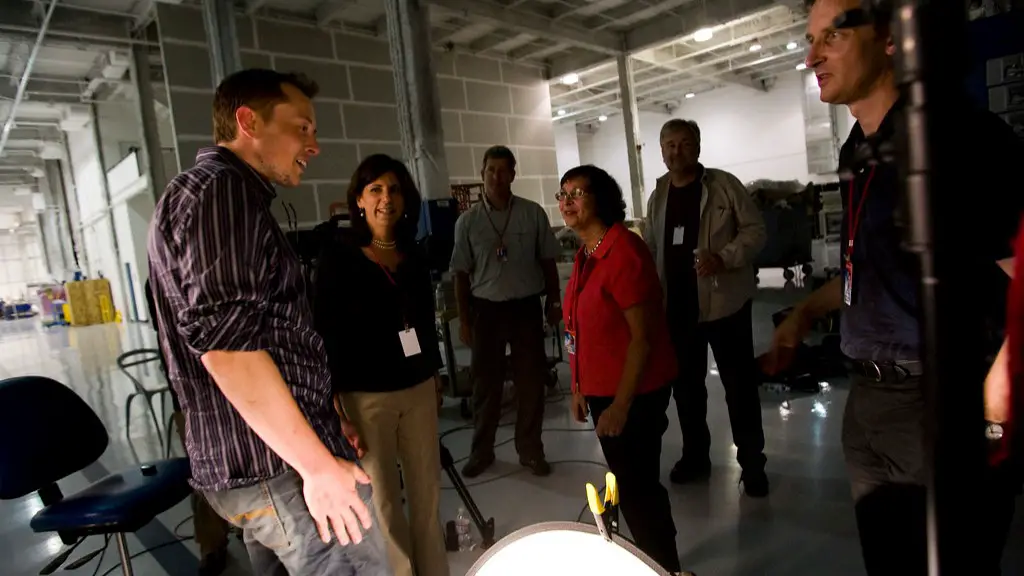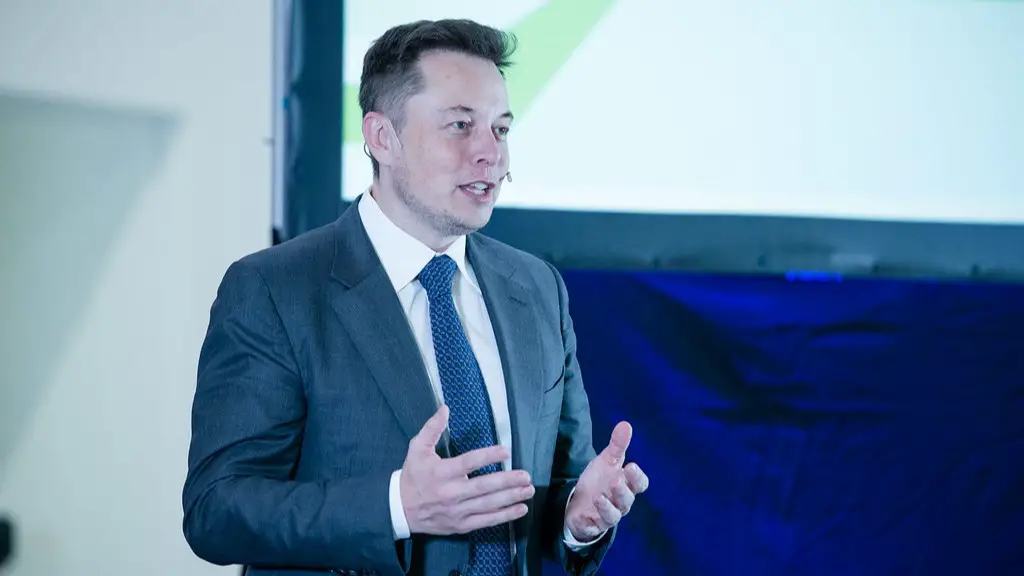Elon Musk has ignited public imagination with his ambitious plans to colonize Mars. Although the idea of living on one of our closest neighboring planets inhabitable by humans may seem like something straight out of a science fiction novel, Musk’s vision has actually driven some of the most exciting recent milestones within the space exploration industry. While the significance and eventual success of Musk’s initiative remains uncertain, it is without doubt a grand undertaking and has the potential to alter the future of humanity.
One of the primary motivations behind Musk’s attempt to travel to Mars is to exponentially increase the chances of humanity’s survival by establishing a colony on the red planet. Musk has pointed out that in the past, sustained exploration has continually increased the number of places where humans have been able to exist and expand. He believes that the same sort of venture needs to be undertaken in space if humanity is to survive, and when Mars is colonized, the human species will become an interplanetary species.
Another compelling reason for Musk’s motivation to reach Mars is that it offers the potential of a habitable planet with a viable environment. Scientists have reported that evidence of water on the surface of Mars could indicate that the surface may have been able to support life at some point in the past. Furthermore, the possibility of subsurface waters could suggest that the planet is capable of sustaining certain forms of life.
Musk’s plan to colonize Mars is also spurred on by the urgency to seek new energy sources. Humans now consume energy at an unsustainable rate, and Musk believes that new sources of energy will be required to meet the expanding demands. He argues that the resources on Mars may offer a renewable source of energy that could also help reduce global warming and secure the future of humanity. Furthermore, explorations on Mars may also provide a valuable data set to understand how human populations can best evolve on other planets – thus increasing the chances of survival of the human species.
Though Musk’s plans come with plenty of benefits, it remains to be seen if his ambitious vision will succeed. Many researchers have pointed out that sending a spaceship to Mars is a far more complicated process than simply launching a rocket. Besides the sheer distance between the two planets, Musk’s plans will also require the development of a fuel efficient technology that is capable of navigating past the radiation belts of Earth. Moreover, there remains a great deal of uncertainty around the stated costs associated with the mission – there are limitless possibilities of the number of resources that may be required, which could considerably increase the financial burden of the project.
Despite the myriad of practical challenges facing Musk, he remains steadfast in his mission to reach Mars. He has already made significant strides towards achieving his ambitions, most notably launching the world’s most powerful commercial rocket – the Falcon Heavy – in February 2018. Although the success of this endeavor remains unclear, it has certainly ignited public enthusiasm and driven a great deal of discussion around the merits of the project.
Mars’ Resources
The resources available on Mars are undoubtedly a major factor in Musk’s plans to colonize the planet. The mineral wealth of Mars could prove to be invaluable, with Musk believing that the precious metals and minerals – such as gold, silver and copper – may offer an opportunity for financial gain. Furthermore, methane could potentially be used as a fuel source for vehicles and industry to be based on Mars.
However, the possibility of tapping into such resources is daunting – first, the cost associated with getting to Mars and then the difficulties of extracting materials from its surface. For example, the mean or median distance between Earth and Mars is roughly 225 million kilometers…the average flight time for a spacecraft traveling from the Earth to Mars is seven months, based on the fastest known trajectories.
Complex logistics must be considered when developing such large projects. Scientists have suggested that autonomous robots and drones may be used to begin the work of surveying and gathering samples. Furthermore, more advanced technologies may be required to extract valuable resources, such as mining equipment and special tools.
Such a mission will require an enormous amount of planning, resources and expertise. From designing the spacecraft and receiving approvals from the government to personally leading the construction of a launchpad, the project promises to be an endeavor of monumental proportions.
The Extent of Musk’s Mission
The colonization of Mars will require more than just a space mission – to traverse the immense distance between the two planets in a viable manner, a space-faring infrastructure is required. Elon Musk has stated that he aims to create a sustainable city on Mars with a large number of individuals residing there. In order to do so, a variety of infrastructures such as roads, housing, fuel refineries and water processing facilities will all be required.
In addition to these civil engineering challenges, Musk has expressed his intent to connect the planet to the rest of the solar system with an expansive transportation network. The ambition of such a project is daunting – especially due to the complexity of the engineering requirements associated with it. This is apart from the challenging physical conditions, such as the extreme Cold War, lack of atmosphere, and solar radiation.
An audacious impetus is necessary when attempting to create a complex and functioning planetary infrastructure. Musk’s goal is to develop a functioning Martian economy, with colonies that are ultimately self-sustainable in terms of the resources they use and the goods they produce. This is yet another daunting engineering feat – as any infrastructure on Mars will require reliable sources of energy, transport, and communication.
Space Transportation and Rocketry
Space travel between Earth and Mars will become an integral part of Musk’s mission – and the development of the cutting-edge technologies required for the project will undoubtedly be a challenging and essential part of the venture. The ongoing research into the possibility of reusable rocket technology seeks to develop systems that could dramatically reduce the costs of space travel
The ever increasing speed of humanity’s space exploration planes has also been instrumental in developing an incredible amount of technological advancement. Putting humans in space, especially more reliably and with more propellant, is also an incredible task. Rocketry, in particular, requires an expertise and understanding that few have, and so the development of Musk’s mission will likely be a collaboration between the industry’s top professionals.
Draconian regulations that exist in many countries to prevent access to space have proven to be obstacle to the visionary goals of Musk. With these regulations influencing the budget constraints, the availability of space technology, and the constricting timelines, making successful and efficient launches to Mars may be a challenge that will continue to impact Musk’s plans.
Environmental Impact on Mars
The final and perhaps most important challenge to consider in Musk’s journey towards Mars is the impact his mission could have on its environment. There is an inherent potential for pollution given the fact that interplanetary travel requires the burning of fossil fuels.
This is compounded by the possibility of installation of factories and large infrastructures that may become necessary to maintain a human presence on the planet. Scientists have revealed that much of the surface of Mars is composed of the same substances – water, oxygen, nitrogen and carbon – as those found on Earth. Thus, the potential for contamination from human activity is high; even if it can be contained in the short term, any long visits to the planet will bring about considerable effects to its atmosphere.
This scenario makes it integral to find ways to reduce the amount of harmful pollutants produced by the trip to Mars, despite the difficulties of establishing a functional colony in the process. If a suitable agreement between governments can be reached and regulations enforced, there is a chance that a part of the trip could be achieved with the help of renewable energy sources. This could include the use of solar panels and propelling a spacecraft with hydrogen.
Safety of Humans on Board
The safety of those that undertake a mission to Mars is an important consideration when planning the mission. Even if the challenge of creating a spacecraft that is capable of traversing the great distance between the two planets is overcome, the possible dangers of radiation, mechanical failure and microgravity will have to be factored into the mission plan by Musk.
Additionally, psychological problems and mental health issues connected to living and traveling in an isolated environment may arise during the mission – particularly for a space mission of such magnitude. The extended period spent aboard and the rigid control experienced by passengers due to the remote nature of the mission will undoubtedly bring a great deal of stress – thus the effectiveness of strategies implement to address these issues becomes paramount.
Nutritional and health aspects will also be an important part of the mission. The lack of proper nourishment may result in fatigue and illness, and so efficient food supply and water filtration systems will be required during the journey. Additionally, ensuring adequate communication with friends and loved ones on Earth will be a real challenge – and psychological stress may still arise even with such systems in place.
Implications and Conclusions
Though many are skeptical of Musk’s mission, the sheer audacity of such plans certainly offers an inspiring glimpse of what could be accomplished by future generations. His vision is unique and groundbreaking, as it seeks to combine interplanetary exploration with the development of complex technologies and revolutionary engineering concepts. The benefits of such a mission in terms of knowledge and resources could prove invaluable, and the potential implications of such a project cannot be ignored.
Ultimately, the outcome of Musk’s mission is difficult to predict – however, it is clear that the construction of a successful, self-sustaining colony on Mars is no simple thing. With the various complexities presented by the environment, the struggle for resources, and technological challenges, the ambitious mission promises to be a monumental undertaking for Musk and his team.




